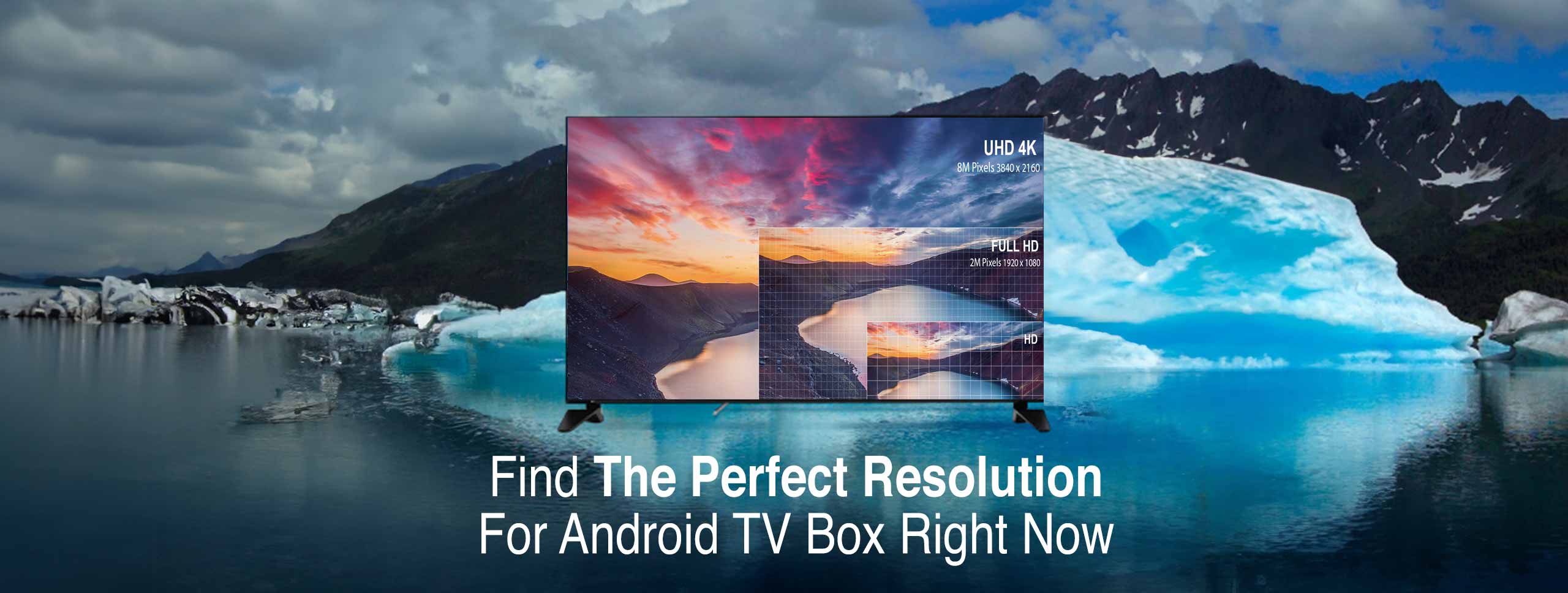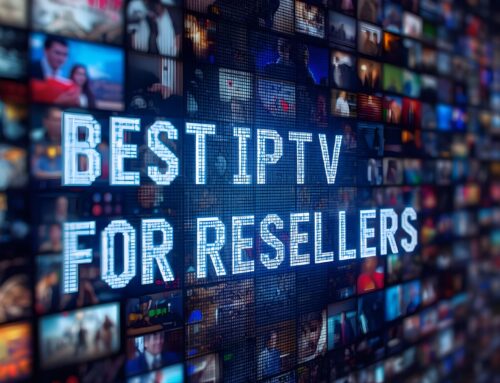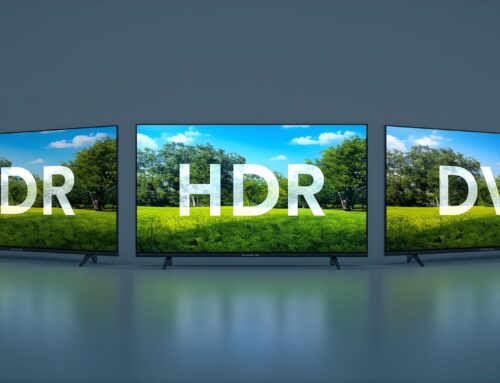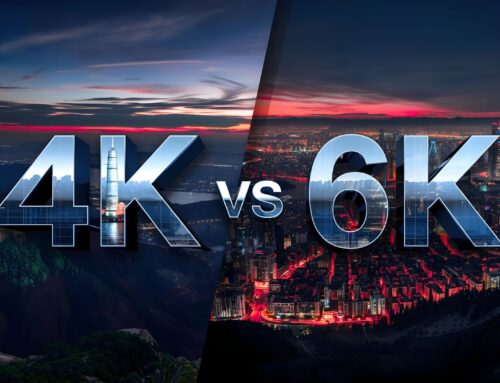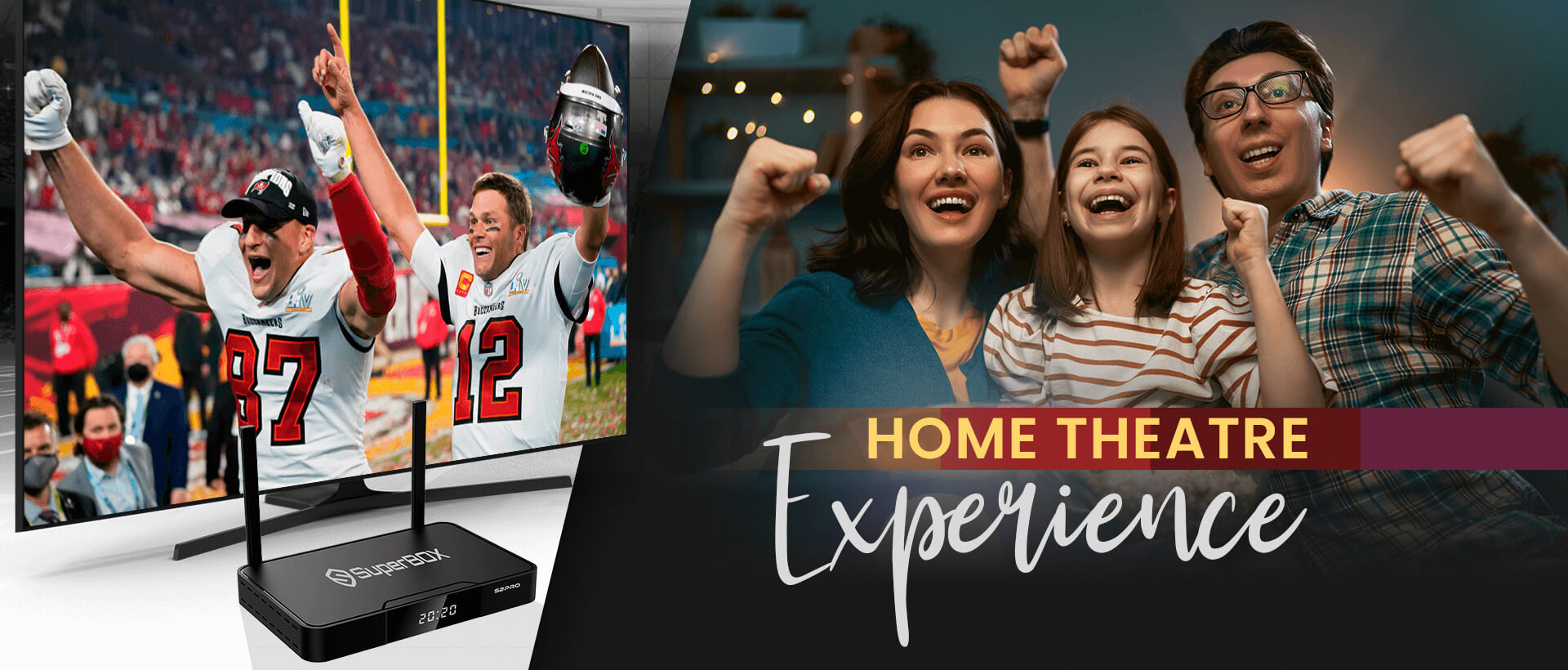Resolution for Android TV Box plays a crucial role in shaping your streaming experience. Whether you’re binge-watching your favorite shows or enjoying live sports, the right resolution ensures crystal-clear visuals and smooth playback. In this guide, we’ll walk you through how to find the perfect resolution for Android TV box, so you can make the most out of your entertainment system.
What is the Best Resolution for Android TV Box?
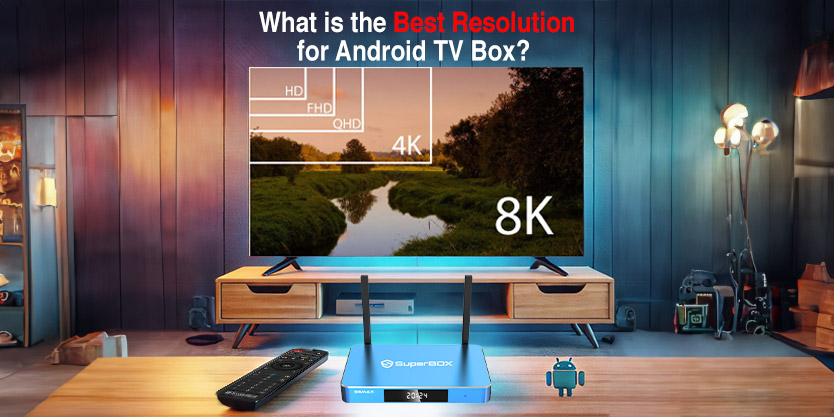
4K Resolution:
4K resolution is a game-changer for Android TV boxes. With about 4,000 pixels horizontally, it delivers stunning detail that leaves 1080p in the dust. When you watch your favorite shows or movies, the sharpness makes everything pop. You’ll notice every little detail, from the textures of clothing to the vibrant colors of nature. Resolution for Android TV Box is not just about numbers; it transforms your viewing experience. Many customers rave about how much more immersive their binge-watching sessions are. They feel like they’re right there in the action!
Moreover, 4K is the go-to choice for digital cinema and high-end displays. It’s not just for hardcore movie buffs; even casual viewers will appreciate the clarity. Experts and reviewers often highlight how 4K enhances everything from sports to documentaries. This upgrade means you can enjoy your content like never before. So, if you’re looking to elevate your entertainment game, a 4K Android TV box is a must-have!
6K Resolution:
6K resolution is a leap forward in video quality for Android TV boxes. With about 6,000 pixels horizontally, it offers incredible detail that makes everything look realistic. Common resolutions, like 6144 x 3160 pixels, provide a stunning viewing experience. When you watch content in 6K, you see textures and colors that jump off the screen. Customers who switch to 6K often rave about how it feels like they’re part of the scene. It’s not just about watching; it’s about experiencing!
Additionally, 6K is mainly found in the motion picture industry and high-end cinematography. Experts and film makers use this resolution for its unmatched clarity and depth. It boasts 19.4 megapixels, surpassing even 4K. Which means every frame looks cinematic and vibrant. For viewers seeking the ultimate home theater experience, 6K is the way to go. Upgrading to a 6K Android TV box elevates your viewing and makes movie nights unforgettable!
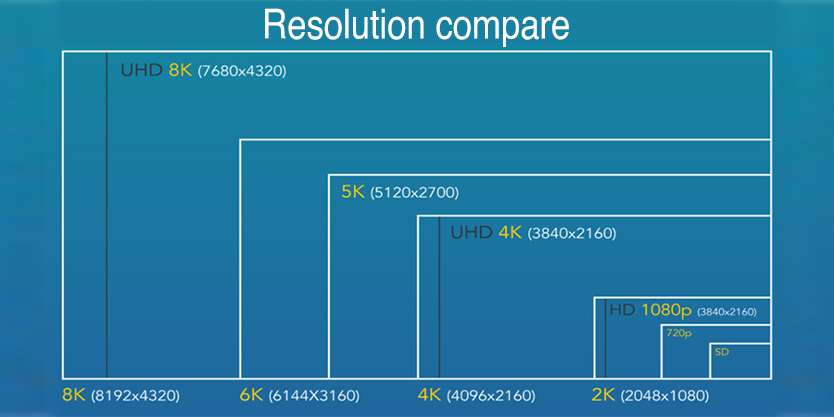
8K Resolution:
8K resolution is revolutionizing how we experience content on Android TV boxes. With around 8,000 pixels horizontally, it delivers jaw-dropping detail that takes your viewing to another level. The most common 8K resolution is 7680 x 4320 pixels, packed in 33.2 megapixels! This means four times the resolution of 4K and sixteen times that of 1080p. Viewers are blown away by how lifelike images look, making every scene feel real. Customers can immerse themselves in their favorite shows like never before!
While 8K is still in its early stages, its potential is undeniable. Currently, it’s mainly showcased at trade shows and high-profile events. Experts and influencers often highlight its incredible clarity and detail, which are close to what our eyes can perceive. 8K makes it perfect for future-proofing your entertainment setup. As content creators catch on, expect to see more 8K content that will blow your mind! So, get ready to embrace the future with the perfect resolution for Android TV Box
Optimal Resolution Settings for Different Streaming Platforms
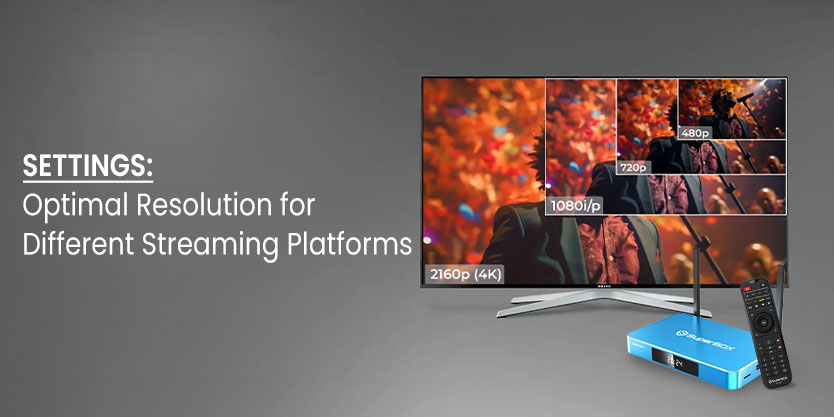
- 720p: This resolution is available on the Basic plan, whether you choose the ad-supported or ad-free option. It is suitable for smaller screens or when bandwidth is limited.
- 1080p (Full HD): Offered on the Standard plan, this resolution is ideal for most modern TVs. It strikes a good balance between quality and data usage.
- 4K UHD: Accessible through the Premium plan, streaming in 4K requires a compatible device, a 4K television, and a minimum internet speed of 25 Mbps. While not all content is available in 4K, many original series and films are.
- 720p: This is the default resolution for most content, making it adequate for mobile devices and smaller screens.
- 1080p (Full HD): Available for select content, especially on supported devices like smart TVs and gaming consoles. Additionally, Hulu’s live TV service supports 1080p streaming.
- 720p: This is the minimum resolution available for streaming on the Basic plan.
- 1080p (Full HD): Most content is offered in this resolution, making it suitable for standard viewing experiences.
- 4K UHD: For select titles with HDR support, users need a compatible device and a stable internet connection of at least 25 Mbps to access 4K content.
General Recommendations for optimal viewing, consider the following:
- If you have a compatible 4K display and sufficient internet speed (25 Mbps or higher), choose 4K. This provides the best visual experience, especially on larger screens.
- Use 1080p if you have a Full HD display but do not require the highest quality. This resolution works well for most viewing situations without excessive data consumption.
- Stick to 720p if bandwidth is limited or if you’re using smaller screens, as higher resolutions may not be noticeable.
Common Resolution Issues and How to Fix Them

Buffering:
- Cause: Buffering usually happens when your internet speed is below 25 Mbps for 4K streaming or below 5 Mbps for HD. Unstable Wi-Fi connections and network congestion can also contribute, especially during peak hours (e.g., evenings when many users are streaming).
- Solution:
- Run an internet speed test. For 4K streaming, aim for at least 25 Mbps; for HD, you need at least 5 Mbps.
- Switch to a wired connection, as Wi-Fi can often drop by 30-50% compared to your full internet speed.
- Close background apps or tabs consuming bandwidth, especially high-data services like online backups or downloads.
- Example: If you notice buffering on Netflix around 8 PM, it could be because your neighborhood’s internet is overloaded. A speed test can confirm if you’re getting the bandwidth you need.
Low Resolution:
- Cause: Streaming services like Netflix and Hulu automatically reduce video quality if your internet speed dips below 3 Mbps. Also, devices like older smartphones or smart TVs may only support lower resolutions, such as 720p or 1080p, even if you’re on a 4K plan.
- Solution:
- Go into your streaming app’s settings and select “High” or “Auto” for the best quality.
- Ensure your device supports HD or 4K resolution. For example, an old TV might max out at 1080p, regardless of your plan.
- Example: If Netflix is streaming in 480p despite a 4K subscription, check if your smart TV is capable of handling 4K.
Pixelation and Blurriness:
- Cause: Pixelation occurs when your internet speed drops to under 3 Mbps, or if the content has been over-compressed to save data. Older streaming devices or using public Wi-Fi, which tends to have limited bandwidth, can also cause these issues.
- Solution:
- Restart your router and streaming device to reset the connection and improve bandwidth.
- Clear cache and cookies, especially if you’re streaming on a browser like Chrome or Safari, as they can slow down performance over time.
- Lower the resolution to 720p if your internet cannot handle higher resolutions.
- Example: Watching YouTube videos on hotel Wi-Fi often leads to pixelation because public networks are typically capped at slower speeds.
Aspect Ratio Problems:
- Cause: Content created in a different aspect ratio (like 4:3 for old TV shows) can appear stretched or letterbox (with black bars) on modern widescreen, which typically use a 16:9 aspect ratio. Another issue could be incorrect display settings on your TV or device.
- Solution:
- Adjust the aspect ratio in your TV’s settings to match the content. Switch between modes like “Fit to Screen” or “16:9” depending on what you’re watching.
- For gaming, make sure the resolution for Android TV Box matches between your desktop and the streaming client, such as Steam or NVIDIA GeForce Now.
- Example: If you’re watching old sitcoms like Friends on a widescreen TV, you’ll likely see black bars unless you adjust the settings to crop or zoom in.
Device Compatibility Issues:
- Cause: Many older devices, like first-generation smart TVs or streaming boxes, don’t support higher resolutions such as 4K or newer formats like HDR10. Additionally, some apps may require specific hardware updates to work correctly (e.g., an old Chromecast might not support 4K).
- Solution:
- Update your device’s firmware or check if the manufacturer provides support for higher resolutions.
- Ensure your device is listed in the streaming service’s compatibility list. For example, not all versions of Roku support Dolby Vision, even if you have the right subscription plan.
- Example: If your Fire TV Stick can’t stream Disney+ in 4K, it could be that you’re using an older model that maxes out at 1080p.
How Resolution Affects Your Streaming Experience
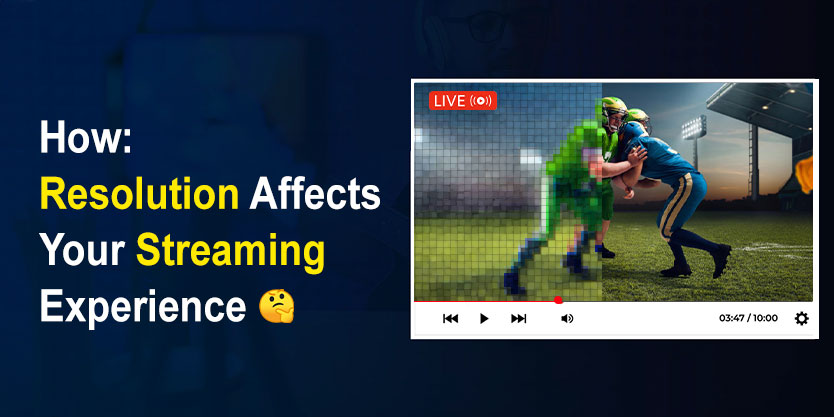
Image Quality affect Resolution for Android TV Box
Higher resolutions like 1080p and 4K deliver sharper, clearer images. This is especially true on larger screens. Picture this: watching your favorite movie on a big TV with stunning detail. You see every nuance in the scenes. In contrast, lower resolutions can make images look pixelated or blurry. Customers notice this difference right away. It’s all about enhancing the viewing experience. Experts agree that investing in a good Android TV box that supports high resolution is worth it. You want to enjoy every detail, right? So, why settle for less when you can have crystal-clear visuals?
Streaming at lower resolutions, like 720p or 480p, can ruin your viewing pleasure. When you watch visually rich content, such as nature documentaries, details get lost. Imagine missing vibrant colors or intricate textures. That’s a total bummer! Reviewers often mention how lower quality impacts immersion. It can feel flat and less engaging. For movie lovers and binge-watchers, this is a big deal. You want to dive into the experience, not be distracted by blurriness. So, consider upgrading to a device that supports higher resolutions. Trust me, your eyes will thank you!
Bandwidth Consumption affect Resolution for Android TV Box
Streaming in higher resolutions, like 4K, can be a game changer for your viewing experience. However, it also demands more bandwidth. For example, you need at least 25 Mbps for smooth 4K streaming. If your internet connection isn’t up to par, the stream might drop to a lower resolution. This can be frustrating, especially if you’re excited about that crisp, clear picture. Nobody wants to deal with buffering. So, it is crucial to check your internet speed before diving into a 4K binge-watch session. Keep this in mind to avoid interruptions!
However, streaming in lower resolutions, like 720p, is a solid option for users with slower internet. You can enjoy a good viewing experience with just around 5 Mbps. 720p makes it easier for people who might not have access to high-speed internet. So, if you’re in an area with limited bandwidth, don’t sweat it! You can still catch your favorite shows without a hitch. Lower resolutions provide a reliable way to enjoy streaming content without constant buffering issues. So go ahead and find the suitable resolution for Android TV Box.
Buffering and Lag affect Resolution for Android TV Box
Streaming at higher resolutions can be a double-edged sword. While it promises stunning visuals, it also increases the risk of buffering, especially if your internet connection is slow or unstable. Imagine settling in for a movie, only to face frustrating interruptions. This scenario happens when bandwidth can’t keep up with the demands of high-resolution streaming. Customers often find themselves pausing to wait, ruining the excitement. To avoid this, a stable and fast internet connection is essential for a smooth viewing experience.
On the flip side, adaptive streaming technologies offer a solution. Platforms like Netflix use smart algorithms to adjust video quality based on your current bandwidth. When your connection dips, the system automatically lowers the resolution. This clever feature minimizes buffering while still delivering decent quality. Viewers can enjoy their favorite shows with fewer interruptions, keeping frustration at bay. So, even with varying internet speeds, adaptive streaming helps maintain the best viewing experience.
Tips for Improving Picture Quality on Android TV Box
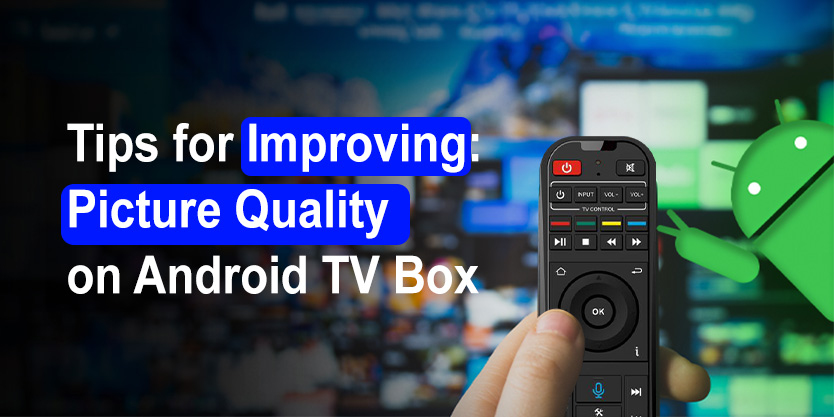
To improve picture quality resolution on your Android TV Box, consider the following tips:
1. Adjust Screen Resolution
- Access Settings: Go to the Settings menu on your Android TV Box.
- Select Display: Navigate to Display or Device Preferences, then choose Screen Resolution.
- Choose Optimal Resolution: Set the resolution to match your TV’s capabilities (e.g., 1080p or 4K) for the best clarity. If your TV supports 4K, select that option to maximize picture quality8.
2. Set HDMI Output Correctly
- Ensure you are using an HDMI 2.0 port for optimal performance. Avoid using HDMI-ARC ports for video output, as they are primarily designed for audio.
3. Configure Color Space
- Adjust the color space settings according to the content you are viewing. For HDR content, set it to Rec.2020; for standard content, use Rec.709. This adjustment can enhance color accuracy and overall picture quality.
4. Enable Digital Noise Reduction
- If available, enable or adjust the Digital Noise Reduction setting on your TV or Android Box to reduce visual noise and improve clarity, particularly in lower-quality streams.
5. Optimize Brightness and Contrast
- Adjust brightness and contrast settings to enhance image depth and detail. Start with a balanced setting and fine-tune based on the content being viewed.
6. Disable Motion Smoothing
- Turn off motion smoothing features (often labeled differently by manufacturers) to avoid the “soap opera effect,” which can detract from the viewing experience by artificially altering frame rates.
7. Use Quality Streaming Apps
- Choose high-quality streaming applications that support better video codecs (like HEVC) and provide refined playback options. Popular apps like VLC or Kodi often offer enhanced video quality settings compared to default applications.
8. Regularly Update Software
- Keep your Android TV Box firmware and apps updated to ensure you have access to the latest features and performance improvements that can enhance picture quality.
9. Check Cable Quality
- Use high-quality HDMI cables that support higher resolutions and refresh rates to avoid any bottle neck in picture quality.
10. Get New Android TV Box
- If the above steps don’t improve your video quality, it’s time to buy a new Android TV box. If you’re an Apple fan, there’s the Apple TV 4K. Or you’re a Google fan, you can go for Chromecast or Onn 4K Pro. Besides, according to experts and YouTubers, the Superbox S6 Ultra is an excellent choice. It not only offers up to 6K quality but also comes with 128GB of storage.
Conclusion about Resolution for Android TV
Choosing the right resolution for your Android TV Box can make all the difference in the quality of your viewing experience. With a few simple adjustments, you can enjoy clearer, sharper images and a more immersive experience. Don’t settle for subpart visuals – take the time to optimize your settings and transform the way you watch TV.

